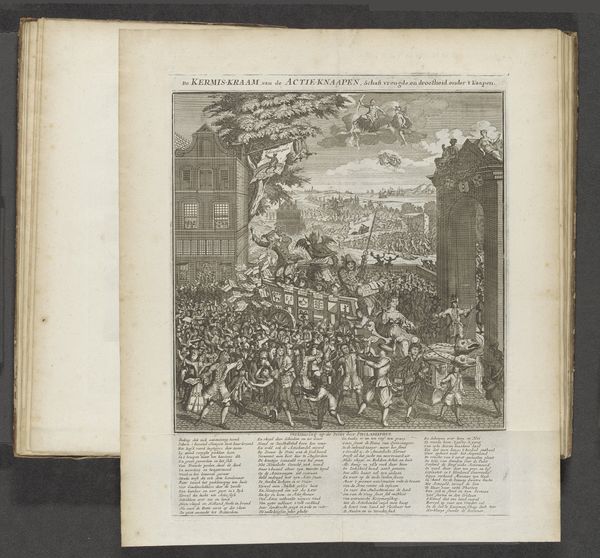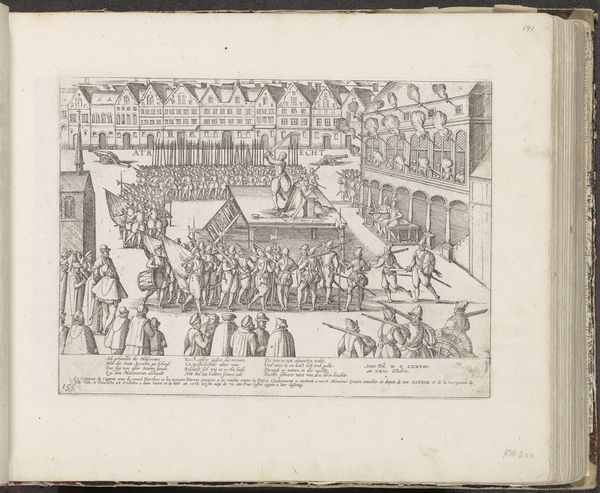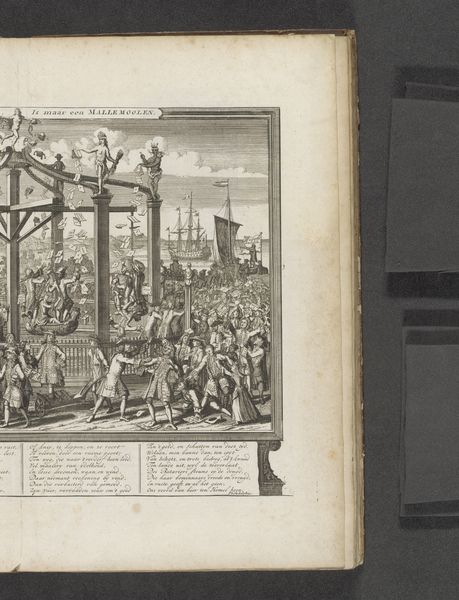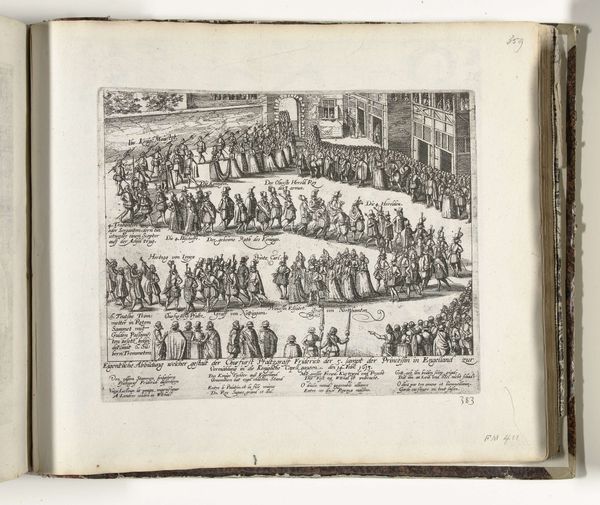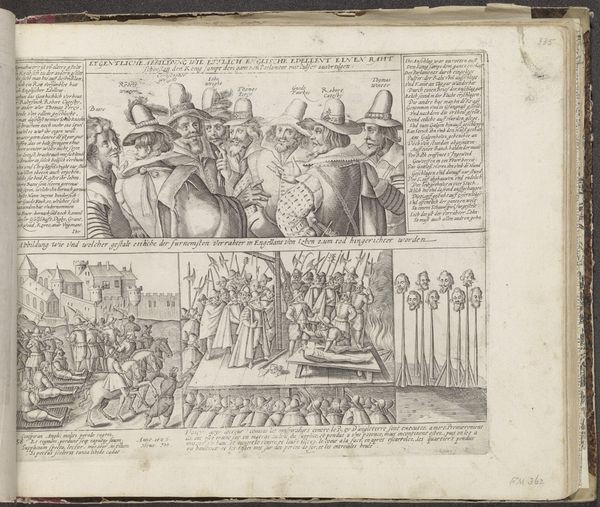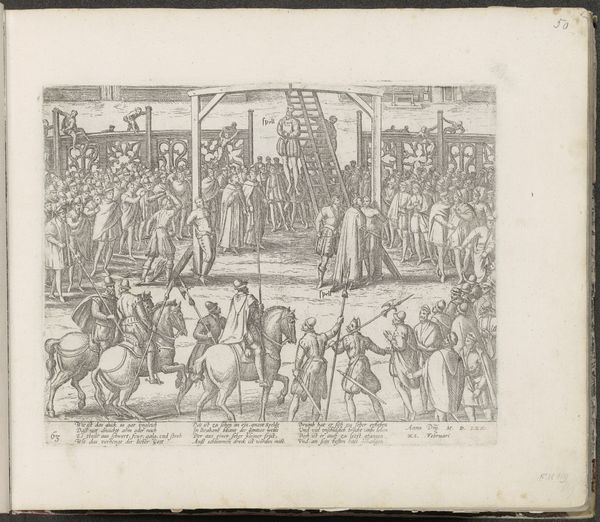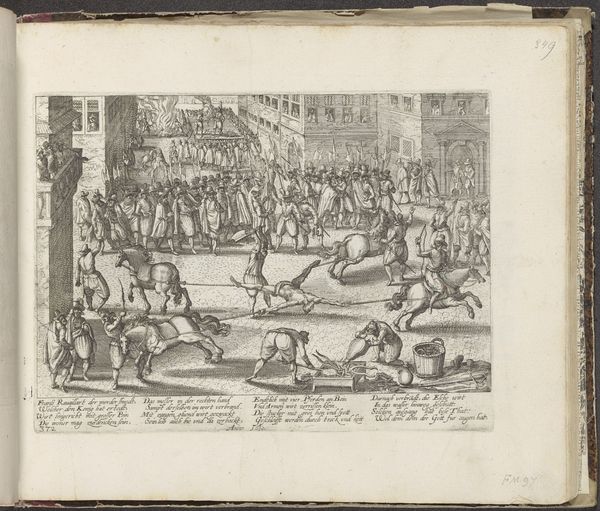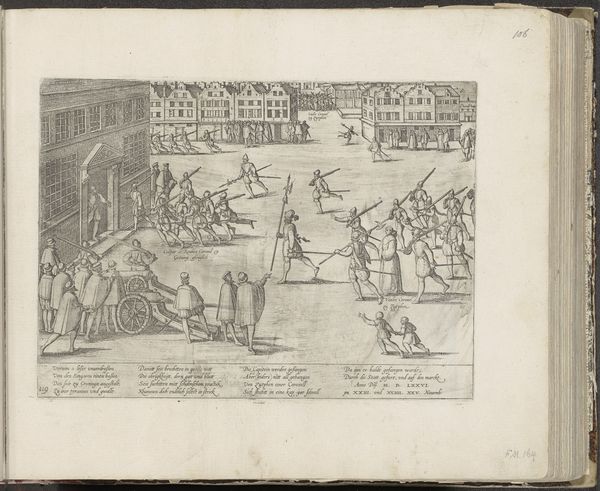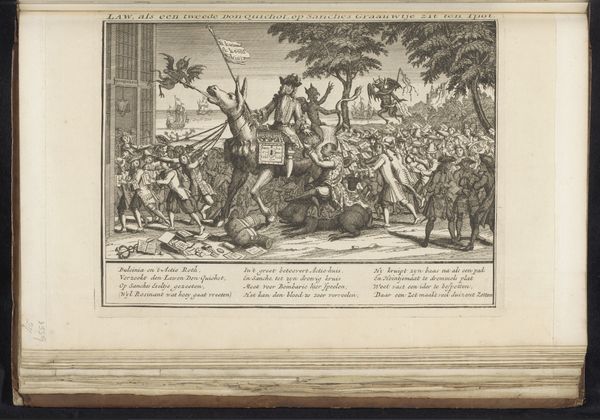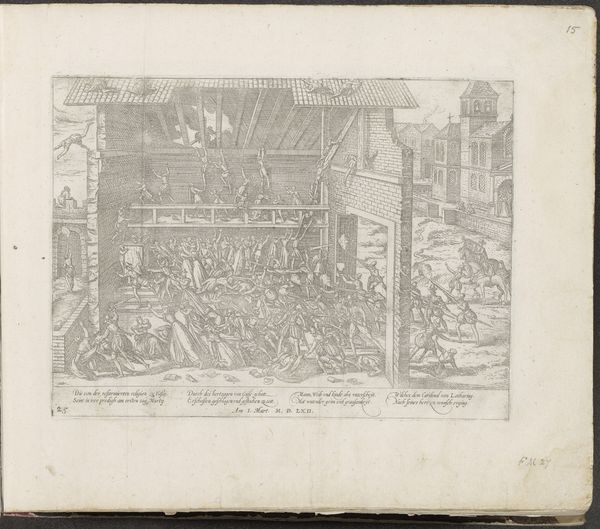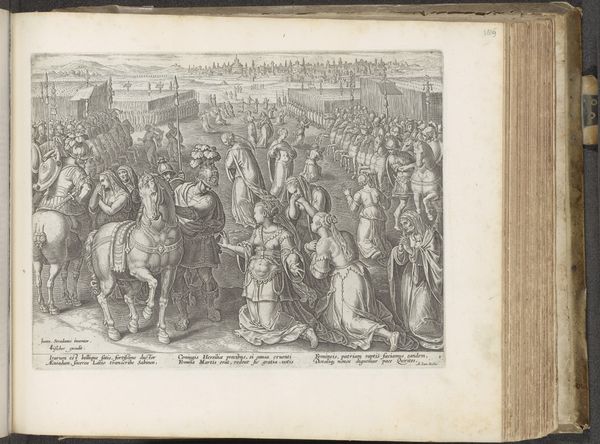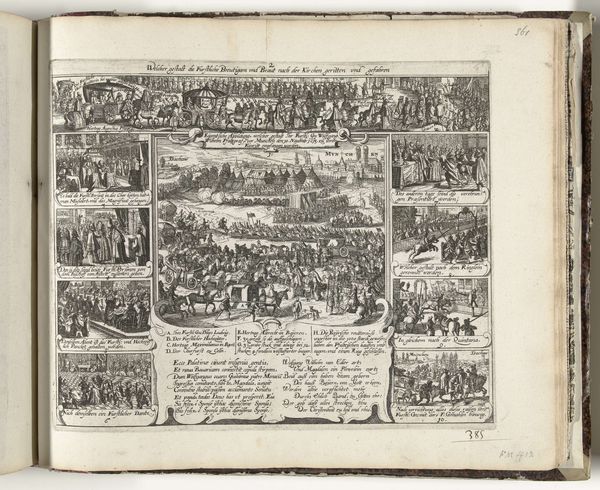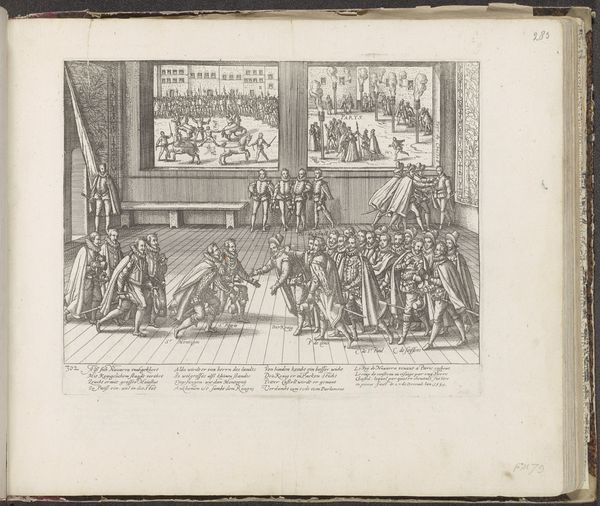
print, engraving
#
baroque
#
ink paper printed
# print
#
landscape
#
genre-painting
#
engraving
Dimensions: height 315 mm, width 428 mm
Copyright: Rijks Museum: Open Domain
Curator: What an incredible engraving. This is "Mallemolen van de Wereld, 1720," dating back to 1720, found here in the Rijksmuseum. It's a fascinating scene rendered in ink on paper by an anonymous artist. Editor: It looks like organized chaos. The details are incredible given the medium, but it has this overall frenetic energy. I am immediately drawn to the dizzying symmetry of the architecture and the swirling bodies, creating a sense of instability. Curator: The architecture you mention is crucial. That structure is the Mallemolen, literally a "mad mill," a carousel or roundabout. It was a place of entertainment but also symbolizes the dizzying, often foolish nature of the world, and humanity's own folly. Look how everyone scrambles for the falling papers. Editor: Are those supposed to be…money? I see the people beneath are quite literally catching the falling scraps as if some higher power, represented above, is throwing down opportunities – whether those opportunities are worthwhile remains to be seen. It's interesting how the artist created depth using hatching techniques. The line weights really build up shadow and define forms in such a small space. Curator: Exactly! These papers represent fleeting opportunities, perhaps lottery tickets or simple tokens of luck. The "mad mill" represents a world turned upside down. Even the landscape in the background hints at earthly pursuits; see the ships sailing off? It's an allusion to global ambition. It’s social satire but executed through this playful lens. What is really striking to me is this symbolism continues through time even now. Editor: It's definitely baroque in its density. I am drawn to the way the artist managed to convey movement and texture, particularly the folds in the clothing and the expressions on the faces, given the constraints of engraving. Each little vignette tells a story. You notice something new each time you look. Curator: Absolutely. Each figure becomes a part of a greater tapestry of human behavior. Knowing more about the cultural context enhances the work's layered meanings. Editor: Seeing it this way, broken into discrete sections which combine for a whole, reinforces how carefully thought out the arrangement really is. Thanks to a bit of social history and sharp, precise visuals, it certainly stays with you long after viewing it.
Comments
No comments
Be the first to comment and join the conversation on the ultimate creative platform.
